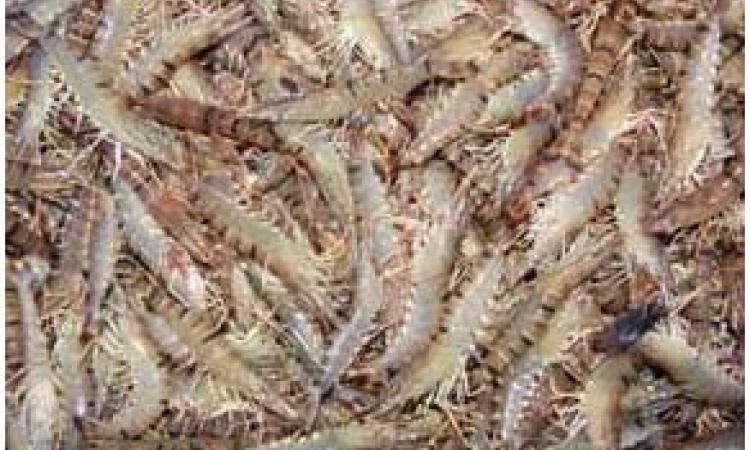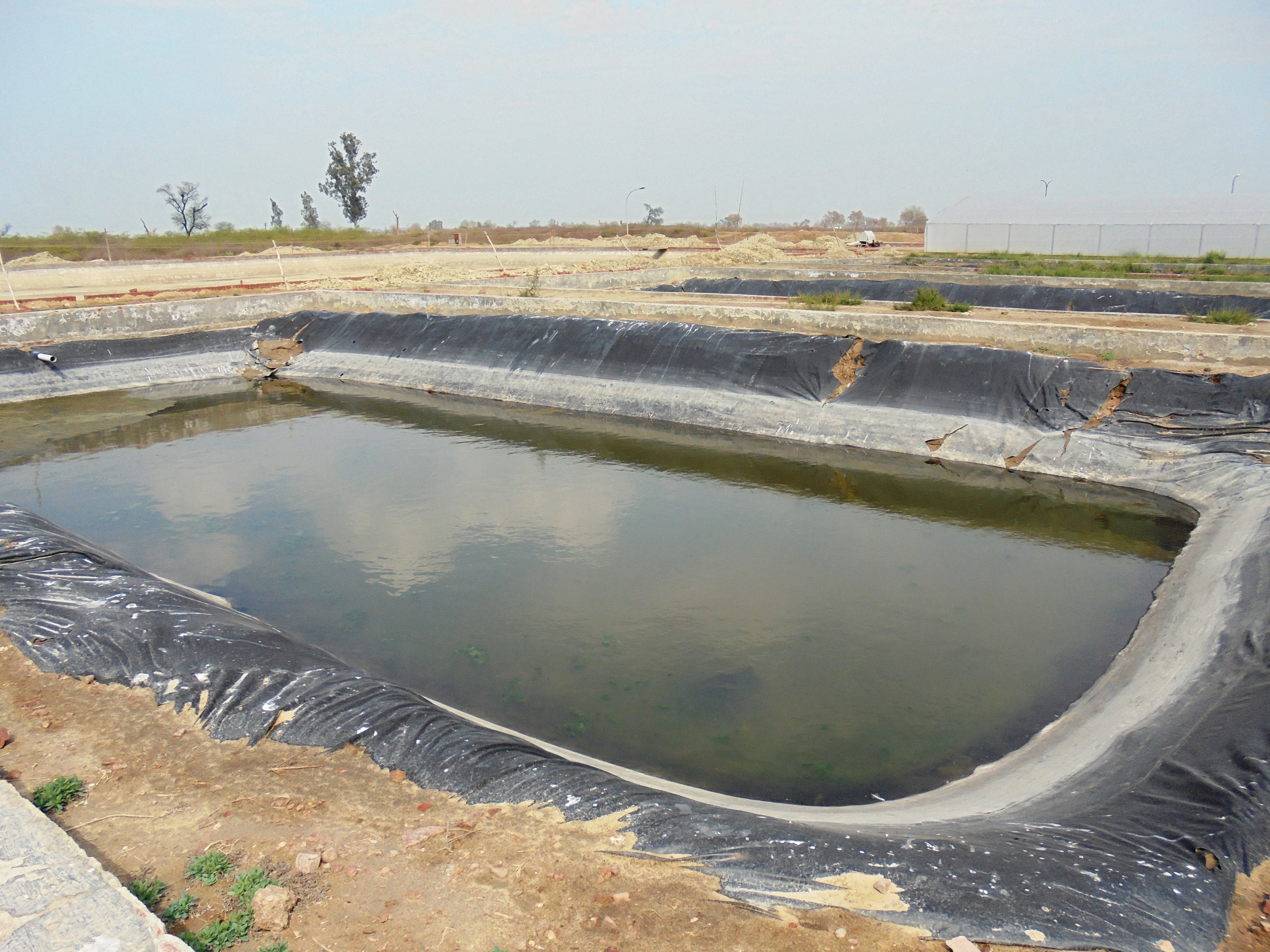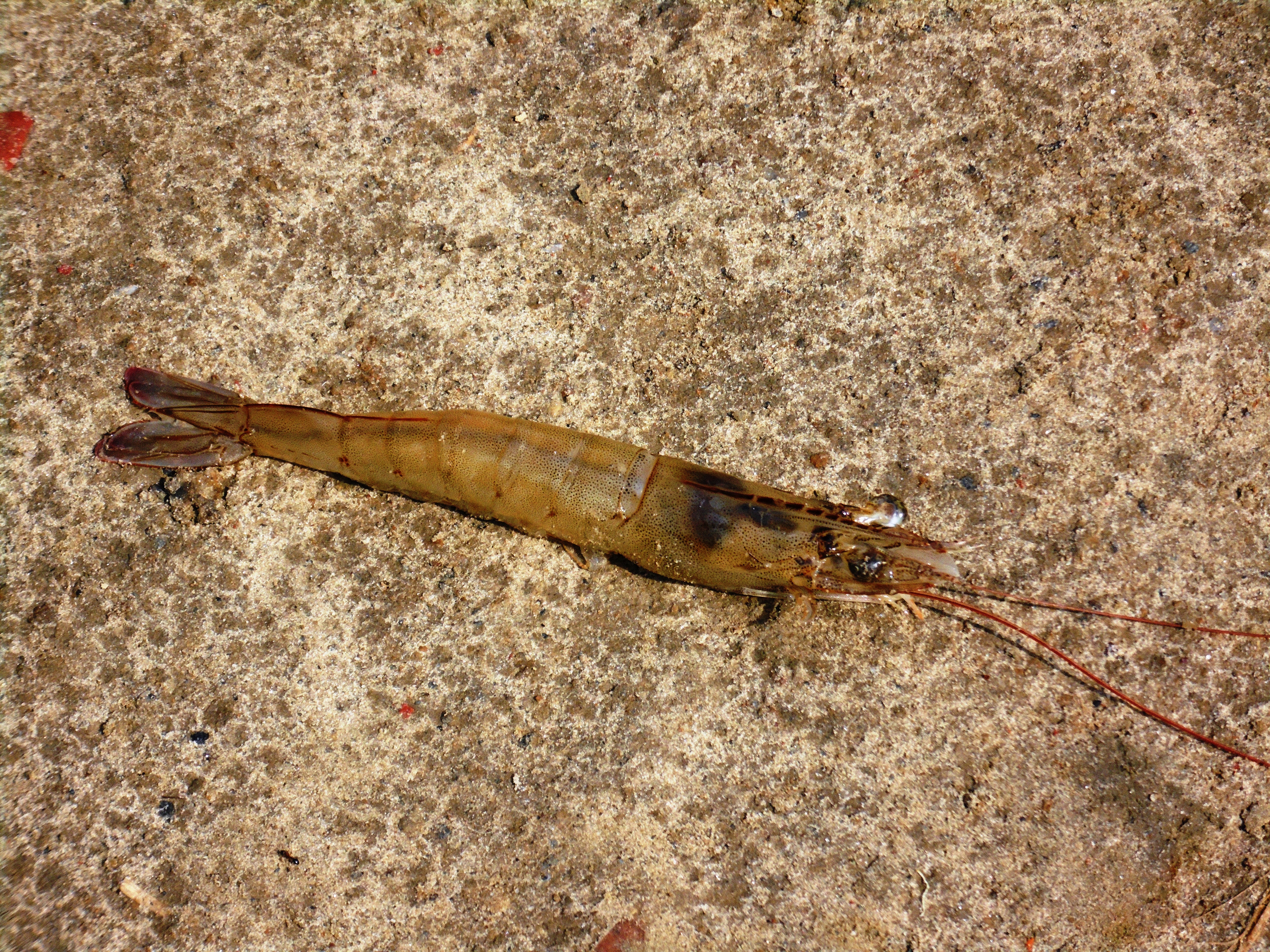
Mile after mile of saline lands line the Delhi-Rohtak-Bhiwani stretch of the highway. Here, the land wasn't always saline, it became that way thanks to canal irrigation. Farmers have used extensive surface water, which has led to an increase in groundwater levels. This leads to the twin problem of waterlogging and salinity. These lands once grew two crops, but lie fallow today.
View Lahli in a larger map
The only upshot that farmer Zile Singh has from his rice-wheat crop, is his house. For the past decade, he has been unable to grow anything on most of his land as his well has turned saline. This is the story of most people here. Hundreds of prosperous farmers in the area have shifted to other non-farm based occupations in recent years.
Soon, many of them will begin growing shrimp.
Aquaculture: the way out
 While fish breed in oceans, rivers and lakes, they can also be raised in dug out ponds in farms. Fish farmers need to recreate the habitat that the fish are used to. The practice of raising fish in this manner is known as aquaculture and it is a very fast growing segment in India, especially in saline water infested Rohtak district. Since groundwater can be used on a large scale, two issues are handled simultaneously: groundwater evaporation and fish/prawn/shrimp rearing.
While fish breed in oceans, rivers and lakes, they can also be raised in dug out ponds in farms. Fish farmers need to recreate the habitat that the fish are used to. The practice of raising fish in this manner is known as aquaculture and it is a very fast growing segment in India, especially in saline water infested Rohtak district. Since groundwater can be used on a large scale, two issues are handled simultaneously: groundwater evaporation and fish/prawn/shrimp rearing.
Tiger shrimp, which has been grown commercially in India for the last 25 years, naturally grows in sea water. Central Institute for Fisheries Education (CIFE) has attempted to introduce tiger shrimp (Penaeus monodon) in Lahli village but the problem is that inland saline groundwater is very different from either freshwater or seawater. Not many species are suited to inland saline lands and water. After some experimentation, they realized that the groundwater at Lahli was poor in Potassium, so the mineral had to be supplemented.

According to Ashok Kumar of CIFE, tiger shrimp shares the greatest chunk of Indian fish export thanks to the quality of its meat and global market demand but perfecting the technology for commercial farming of tiger shrimps has taken them a while. In recent trials they have stocked the aquaculture ponds with shrimp seeds brought from Kakinada in Andhra Pradesh. The 110-day culture duration was able to achieve a survival rate of around 85 per cent. The net production was over 1340 kg/ha, which is comparable to the yield from coastal areas. In CIFE’s farm, two crops of tiger shrimp are being taken per year between March-November.

From a test environment, CIFE now plans to roll out the technology to other farmers in the area. This is doable because of CIFE’s previous experience in seed production of giant freshwater prawn (Scampi) using inland saline groundwater and the commercial supply of seed to large-scale farmers of Haryana, Punjab and Uttar Pradesh. The challenge is to introduce this technology among smaller farmers.
CIFE has approached NABARD to provide incentives to smaller farmers because the total cost including working capital expenses for raising the first crop for a one hectare tiger shrimp farm works out to around 14 lakhs. The plan is to get NABARD to provide financing for this.
If all goes well we could soon be watching a haul of tiger shrimps being pulled over the side of Haryana farms.
Lead image source: Central Institute for Fisheries Education (CIFE)
References
(1) Rohtak: District Brochure, Central Ground Water Board, 2007
/articles/fishing-shrimp-haryanas-farmlands